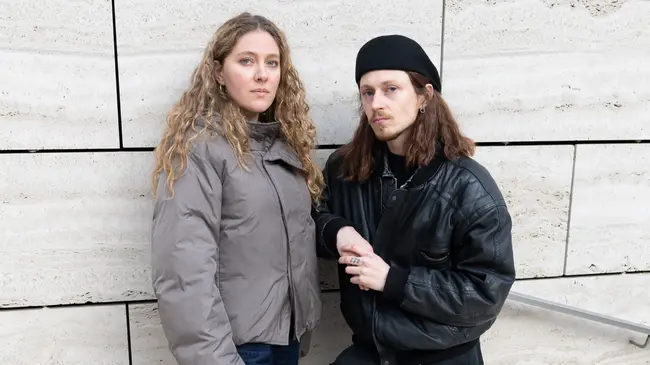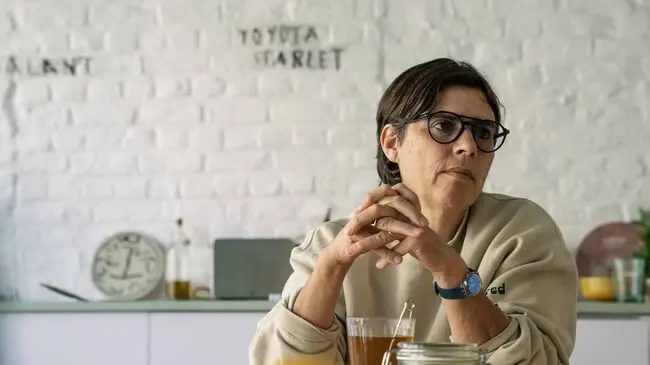I became known as the Quasimodo of New York

The idiosyncratic 60s avant-garde legend Charlemagne Palestine is slowly getting fired up again for the resumption of regular life. With the reflection of the beach of Oostende in his glasses, we met with the ever-cheerful and colourful crazy-ist on Skype to talk about his carillon in Kanal and to reflect on the Fluxus movement.
What do you find the most interesting about this period in time?
I never knew that my wife could cook so much. I’ve always been an eat-out artist. But for a year now she’s been organising all kinds of dinners and she’s very serious about it. It’s amazing. During the first six months of the lockdown, I was a Netflix vegetable. But now I’m actually starting to work again, going out and taking the risk. It’s frustrating, but we’ve come up with a rhythm. Anyway, I’m fine here. We bought this place on the beach here in Oostende just before the pandemic. I’m looking out on the sea while working on a book about the years that have passed as an artist.
Do you mean a biography?
Well, more like a schmiography. [Laughs] I don’t like those traditional forms. I don’t know what it’ll be. I’m just putting lots of things together.
Why of all instruments did you choose the carillon? What does it mean to you?
In 1963, as a 16-year-old boy in New York City, I used to sell marihuana outside of my high school. My girlfriend at that time was afraid I was going to get caught, so she started to look for another job for me. It turned out there was a carillon right next to the MOMA and the player was about to quit. They were looking for somebody who would play every day at 5 o’clock in the afternoon. The bells could be heard and seen in the sculpture garden of the museum. I did that for seven years and became known as the Quasimodo of New York.
I drank and ate with the Fluxus artists just as I did with the minimalists. I never was a Fluxer, but I was a friend of Fluxus
When did you meet John Armleder for the first time?
I met him in the early 80s in Geneva when I lived there for a while. He had an alternative bookshop. He was very much into Fluxus and performance art, and all kinds of alternative things that I also was into. We’re almost the same age and we remained friends all these years. I also knew John’s mother. She had a very well-known, jazzy hotel in the middle of Geneva. John’s mother was very gregarious. When you came to the bar of the hotel and you were an artist, she would come and salute you and buy you a drink.
The exhibition is quite inspired by the Fluxus movement. The title 'It never Ends' might also hint at this. Did this movement in art influence your work?
I drank and ate with the Fluxus artists just as I did with the minimalists. I never was a Fluxer, but I was a friend of Fluxus. I was more a crazy ist. Even though they had many ideas and ways of presenting art in an untraditional way, their point of view was often too dry for me. They were much more into programming and notating even if it was in a very unusual way, even John Cage. Basically, they pre-programmed what they were going to do. I preferred to have no idea what I was going to do and program it after. It was a different way of living.
All the people asleep were turned to stone. So since they were all sleeping, I went to give them a little doo-doo
You started working with stuffed animals in the 60s. What was the intention back then?
The people who invented the teddy bear were Eastern European Jews who immigrated to Brooklyn one generation before me and my parents. The couple that invented the teddy bear in 1902 for Teddy Roosevelt came from the same area in Europe as my mother. So all of a sudden it took on this connection with my roots. It’s one of the reasons that these divinities became part of the language. I had stuffed animals like any child. But after university, I went to live in California. A woman I met there bought me a little bear in the Salvation Army that had blue eyes. It sort of became my alter ego. That started my career as a stuffed animal artist.
Is anything else planned for the near future?
I just finished a 20-minute video work for the new museum in Pompeii, South of Naples where the famous volcano erupted in AD 79 at 6:30 in the morning. All the people asleep were turned to stone. So since they were all sleeping, I went to give them a little doo-doo, their own comfort divinity.
What will never end for Charlemagne Palestine?
Well, my curiosity and my want to continue. There’s no retirement for an artist like me. I’ll be working till the last breath. [Laughs]
Different Class works with the interest of their community at heart.
Our work’s purpose is to foster a solid network for independent artists, those who love them, and those who want to support them. Become a member to contribute to the local Belgian art scene.





